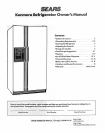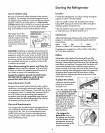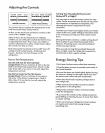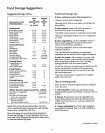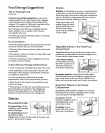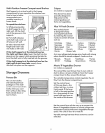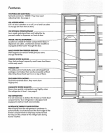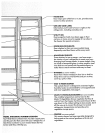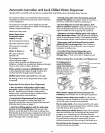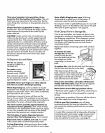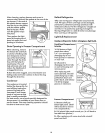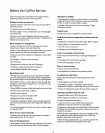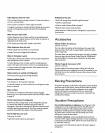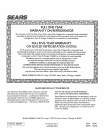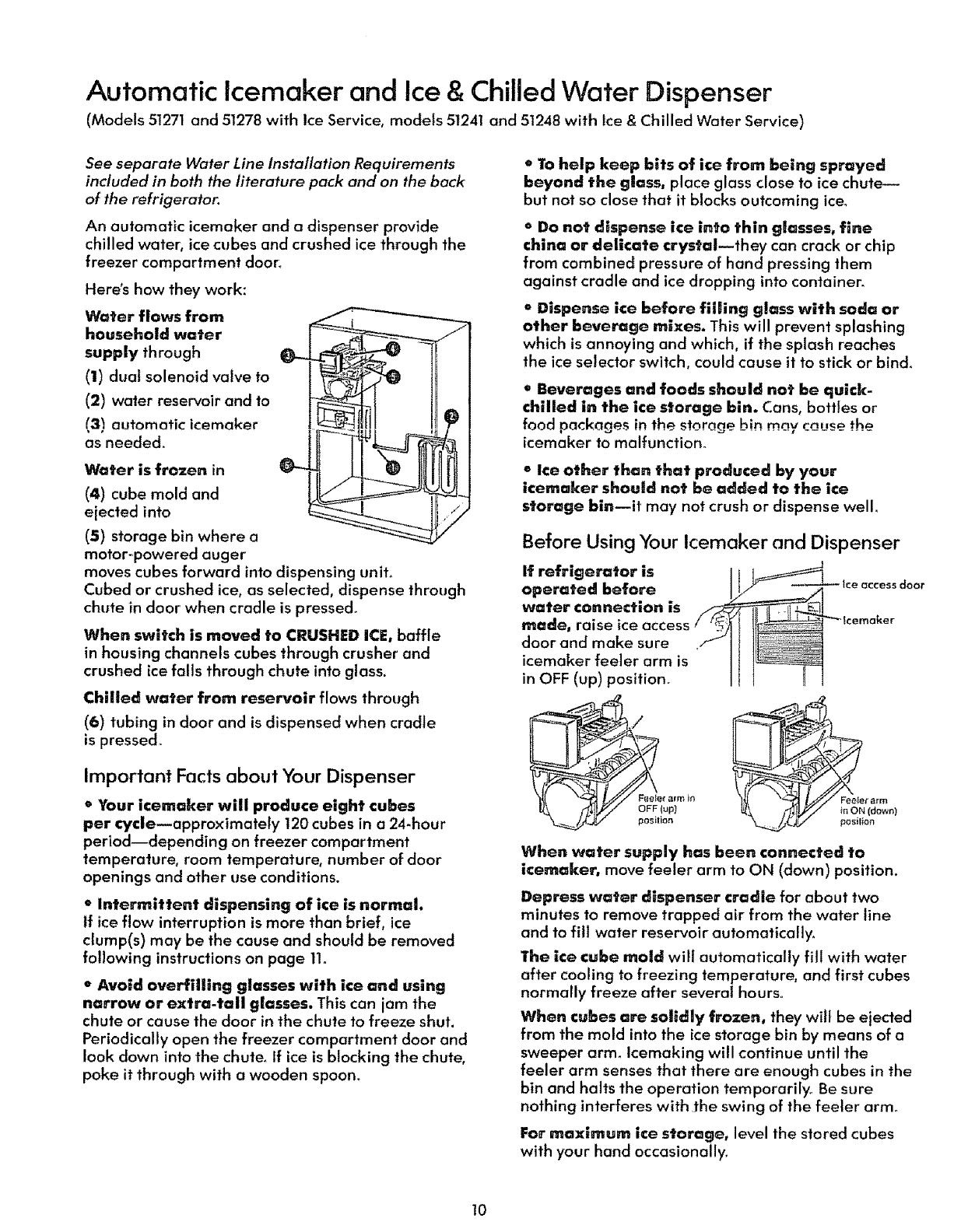
Automatic lcemaker and Ice & Chilled Water Dispenser
(Models 51271 and 51278 with Ice Service, models 51241 and 51248 with Ice & Chilled Water Service)
See separate Water Line Installation Requirements
included in both the literature pack and on the back
of the refrigerator.
An automatic icemaker and a dispenser provide
chilled water, ice cubes and crushed ice through the
freezer compartment door_
Here's how they work:
Water flows from
household water
supply through
(1) dual solenoid valve to
(2) water reservoir and to
(3) automatic icemaker
as needed.
Water is frozen in
(4) cube mold and
ejected into
(5) storage bin where a
motor-powered auger
moves cubes forward into dispensing unit.
Cubed or crushed ice, as selected, dispense through
chute in door when cradle is pressed°
When switch is moved to CRUSHED ICE, baffle
in housing channels cubes through crusher and
crushed ice falls through chute into glass.
Chilled water from reservoir flows through
(6) tubing in door and isdispensed when cradle
is pressed°
Important Facts about Your Dispenser
o Your icemaker will produce eight cubes
per cycle--approximately 120 cubes in a 24-hour
period--depending on freezer compartment
temperature, room temperature, number of door
openings and other use conditions.
• Intermittent dispensing of ice is normal.
If ice flow interruption is more than brief, ice
clump(s) may be the cause and should be removed
following instructions on page 11_
o Avoid overfilling glasses with ice and using
narrow or extra-tall glasses. This can jam the
chute or cause the door in the chute to freeze shut.
Periodically open the freezer compartment door and
look down into the chute. If ice is blocking the chute,
poke it through with a wooden spoon.
• To help keep bits of ice from being sprayed
beyond the glass, place glass close to ice chute--
but not so close that it blocks outcoming ice.
o Do not dispense ice into thin glasses, fine
china or delicate crystal--they can crack or chip
from combined pressure of hand pressing them
against cradle and ice dropping into container.
o Dispense ice before filling glass with soda or
other beverage mixes. This will prevent splashing
which is annoying and which, if the splash reaches
the ice selector switch, could cause it to stick or bind.
* Beverages and foods should not be quick-
chilled in the ice storage bin. Cans, bottles or
food packages in the storage bin may cause the
icemaker to malfunction.
e Ice other than that produced by your
icemaker should not be added to the ice
storage bln--it may not crush or dispense well
Before Using Your Icemaker and Dispenser
If refrigerator is
operated before
water connection is
made, raiseiceaccess/r_..
door and make sure .,_
icemaker feeler arm is
in OFF (up) Josltion.
Fe_lef r_rrnin
OFF (up)
position
_|ce occess door
_Icemaker
_ r _b'rcl
When water supply has been connected to
icemaker, move feeler arm to ON (down) position.
Depress water d_spenser cradle for about two
minutes to remove trapped air from the water line
and to fitl water reservoir automatically.
The ice cube mold wilf automatically fill with water
after cooling to freezing temperature, and first cubes
normally freeze after several hours°
When cubes are solidly frozen, they wilt be ejected
from the mold into the ice storage bin by means of a
sweeper arm. Icemaking will continue until the
feeler arm senses that there are enough cubes in the
bin and halts the operation temporarily Be sure
nothing interferes with:the swing of the feeler arm°
For maximum ice storage, level the stored cubes
with your hand occasionally.
10



